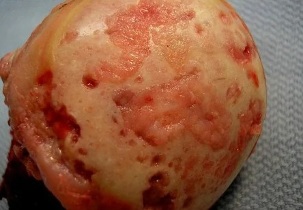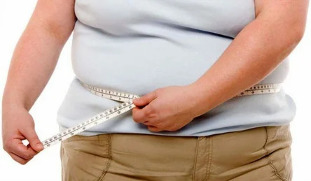Osteoarthritis is a chronic disease that affects the connective tissue structures of the musculoskeletal device. Disease characterized by a progressive course, with gradual destruction of the cartilage. Osteoarthritis is diagnosed in most patients after 65 years as one reason for its development is the natural aging process.
The appearance of degenerative-dystrophic pathology of the result of previous trauma, hormonal and inflammatory diseases, excessive physical exertion or, on the contrary, lack of physical activity. The leading symptoms of osteoarthritis are pain, swelling of joints, limitation of movements.
Diagnose pathology makes instrumental studies — x-ray, endoscopy, MRI, CT. Arthritis 1 and 2 severity treated conservatively, of course, drugs, physical therapy and massage, exercise therapy. When the irreversible destructive changes in the joints, surgical intervention — arthrodesis, arthroplasty.
Pathogenetic mechanisms
Osteoarthritis occurs in pronounced changes in the internal connective tissue structures. Is a cartilage tissue formed in the shape of the erosion, which causes destruction of the collagen fibers, and proteoglycans, which consists of protein (5-10%) and glycosaminoglycans (90-95%). The result of collagen it loses its stability, are starting to be released metalloproteinase that destroy all types of extracellular matrix proteins. Decomposition is accelerated by increasing the biosynthesis of collagens and stromelysin. In general, normal values for enzymes controlling cytokines — are small peptide information molecules. But with the progression of osteoarthritis, these the concentration of proteins decreases, which causes the release of large number of enzymes damage the cartilage.

Proteoglycans changed the structure begins to absorb water molecules, which are able to keep. Therefore, the excess liquid will become the collagen fibers. They "swell", to lose strength and elasticity. Qualitative and quantitative composition of the synovial fluid is also negative changes. In osteoarthritis, it reduces the concentration of hyaluronic acid. So transparent cartilage no longer enough in their reform of the amount of nutrients and oxygen. In cartilage tissue formed foci of softening, and then cracks, especially necrotic tumors. Bone head bare, you can start a micro traumatic at offset in relation to each other.
Causes and predisposing factors
The causes of primary (idiopathic) osteoarthritis is not yet established. It happens when there is no precipitating factors, therefore, put forward the theory of hereditary predisposition to premature breakdown of cartilage. Secondary osteoarthritis develops as a result of other diseases of the joints, or previous injuries. What can cause degenerative diseases:
- damage to the joint or nearby connective tissue structures, fracture, dislocation, injuries to the meniscus, partial tear of muscles, ligaments, tendons, or their complete detachment of the bone from the base;
- congenital dysplasia developmental disorder of articulation;
- violation of the endocrine glands, disorder of the metabolism;
- rheumatism or rheumatic fever;
- rheumatoid arthritis, reactive, metabolic, psoriatic arthritis, or gouty arthritis, polyarthritis;
- purulent arthritis caused by streptococcus or Staphylococcus epidermidis staphylococcus;
- tuberculosis of any localization, brucellosis, chlamydia, gonorrhea, syphilis;
- degenerative disease, for example, dissecting Legg.
The development of osteoarthritis exposure to hypermobility of the joints due to production, particularly of collagen. This condition is diagnosed in 10% of the global population and is not considered a pathology. But the hypermobility is accompanied by weakness of the tendinous-ligamentous apparatus, which often leads to injuries, especially ankle (sprains and torn ligaments, sprains).
Cause arthritis sometimes are disorders of hematopoiesis, for example, hemophilia. Hemarthrosis, or bleeding into the cavity of the joint, provoking a deterioration of the trophic cartilage and their destruction.
In the predisposing factors are age, number of stress on the joints, that exceed the limit of their strength, weight gain, surgery, and hypothermia.

The risk group includes women in menopause, people living in adverse environmental conditions or contact with toxic chemical compounds. Deficiency in the diet food of vitamins and minerals, to create conditions for the gradual disintegration of the transparent cartilage.
The clinical picture
The danger of osteoarthritis is the lack of symptoms in the first stage of its development. The disease is clinically manifested gradually, the first signs arise against significant destruction of the cartilage tissue. Firstly, the person will experience mild pain, without clear localization. It appears after physical exertion — lifting weights, sports training. Sometimes the first clinical manifestation is a crunch, clicks when bending or unbending of the joint. People began to notice that certain movements are difficult. However, in the early stages of osteoarthritis of the stiffness occurs in the morning hours and soon disappears.
As the disease progresses pain is felt at night, when not only sleep disorders, but the emergence of chronic fatigue. The intensity of pain syndrome in the second step increases the change in the weather, exacerbation of chronic diseases, infection. Significantly reduced range of motion. The reason for the stiffness comes from the thinning of cartilage and the deliberate restriction of a person's movements trying to avoid the pain. This leads to increased load on the opposite joint, which causes further damage. Osteoarthritis of the feature and the other special symptoms:
- pain provokes spasms of skeletal muscles and development of muscle contractures (restriction of passive movements in the joint);
- crunch in the joints, clicks, crackle on the move to be permanent, occur on almost every displacement of the bones relative to each other;
- often there is a painful cramping;
- the joints are deformed, which leads to the disorders of posture and gait;
- in the third stage of osteoarthritis of the deformation is expressed so vividly that the joint is bent, and the number of movements, they significantly reduce, or completely gone;
- third degree osteoarthritis of the knee, ankle, hip, when moving a patient to use a cane or crutches.
If untreated, the disease progresses, and during the remission alternating with recurrences, and the frequency of exacerbations is increasing all the time. Stiffness in the morning, now will not disappear for a long time, it becomes permanent.
The patient's examination with osteoarthritis of 1 degree, the doctor found only a slight swelling of the joint and the complete safety of the range of motion. In the pathology of 2 degrees palpation reveals pain and weakly expressed in the form of changes. Area connection status detected in the bone nodules.
Osteoarthritis characterized by the development of arthritis — an inflammation of the synovial membranes of the hip, knee, ankle, shoulder joints. Their leading symptom is a rounded education seal area of the joint, by pressing which is the displacement of the fluid (range). Acute synovitis may be accompanied by a rise of temperature to 37-38°C, headaches, digestive disorders.
Diagnosis
The diagnosis put on the basis of results of instrumental investigations, clinical features, anamnesis, complaints of patients. The general analysis of blood and urine uninformative — all values remain within normal limits, if the arthritis is not triggered by metabolic disorders. With the development of synovitis increases the erythrocyte sedimentation rate (30 mm/h) in the blood increases the level of leukocytes, and fibrinogen. This indicates that occur in the body acute or chronic inflammatory process. Changes, biochemical and immunological parameters occur secondary to osteoarthritis.
The most informative method of diagnosis of degenerative-dystrophic pathology — radiography in frontal and lateral projections.
| Stage of osteoarthritis in accordance with the classification of Kellgren-Lawrence (1957) | Radiographic signs of pathology |
| Original | The absence of radiological signs |
| The first | Unclear, irregular narrowing of the joint space. A small flattening of the edges of the bone plates, the original formation of osteophytes, or the lack of it |
| Another | A significant narrowing of the joint space greater than the norm by 2-3 times, the formation of a large number of osteophytes, subchondral osteosclerosis. The appearance of kistevidnyj enlightenment epifyysit |
| The third | The appearance of expressed subchondral osteosclerosis and large marginal osteophytes, significant narrowing of joint space |
| Four | The formation of coarse massive osteophytes, the almost complete fusion of the joint space, the deformation and compaction of the epifyysit the bones that form the joint |
If after studying x-ray images the doctor has doubts about setting a diagnosis, prescribe a CT scan. And assess the state of located around the joint connective tissue structures of the MK. When you use the contrast dynamics to evaluate blood flow to the tissue, set the stage for the inflammatory process in the development of synovitis.
The main methods of treatment
Osteoarthritis is still an incurable disease, there are no drugs for the regeneration of cartilage. The main task of treatment becomes the prevention of the progression of diseases, the preservation of joint mobility. Treatment is long and complex, using both local and systemic medications. Patients should avoid severe stress on the joint, if necessary, to limit the range of motion orthopedic devices such as braces, elastic bandages. Patients who are overweight, you need to make changes to the diet gradual weight loss and diet.
When you achieve long-term remission of patients shown daily physiotherapy sessions. The first training will be implemented under the guidance of a physical therapist, then the patient performs the exercises at home. Physical therapy can be supplemented with swimming, yoga, Cycling.
Relieves pain prescribers from different clinical and pharmacological groups:
- nonsteroidal anti-inflammatory drugs in the form of creams, tablets, solutions for parenteral administration of active ingredients;
- injections are common solutions to anesthetics in combination with corticosteroids;
- muscle relaxants to eliminate muscle spasms and restrictive contractures.
The therapeutic system contains B-vitamins, sedatives, if necessary, tranquilizers and antidepressants. Is also the name of a chondroprotectors long course to receive. This is the only group of drugs that have the ability to partially restore cartilage.
To improve their clinical operations and physical therapy — laser therapy, magnetic field, UHF-therapy.
All joint pain should be a signal for immediate treatment to the doctor. Treatment was implemented in the early stages of osteoarthritis, it will help stop the destruction of the cartilage, in order to avoid the loss of health and disability.






















